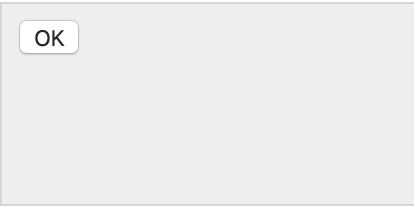
HTML - Header
We have learnt that a typical HTML document will have following structure:
Document declaration tag <html> <head> Document header related tags </head> <body> Document body related tags </body> </html>
This chapter will provide a little more information about header part which is represented by HTML <head> tag. The <head> tag is a container of various important tags like <title>, <meta>, <link>, <base>, <style>, <script>, and <noscript> tags.
The HTML <title> Tag
The HTML <title> tag is used for setting the title of the HTML document. The following is an example to give a title to an HTML document:
<!DOCTYPE html> <html> <head> <title>HTML Title Tag Example</title> </head> <body> <p>Hello, World!</p> </body> </html>
The above code will be displayed as:

The HTML <meta> Tag
The HTML <meta> tag is used to provide metadata about the HTML document which includes information about page expiry, page author, list of keywords, page description, etc.
Following are few of the important usages of <meta> tag inside an HTML document:
<!DOCTYPE html> <html> <head> <title>HTML Meta Tag Example</title> <!-- Provide list of keywords --> <meta name = "keywords" content = "C, C++, Java, PHP, Perl, Python"> <!-- Provide description of the page --> <meta name = "description" content = "Simply Easy Learning by Tutorials Point"> <!-- Author information --> <meta name = "author" content = "Tutorials Point"> <!-- Page content type --> <meta http-equiv = "content-type" content = "text/html; charset = UTF-8"> <!-- Page refreshing delay --> <meta http-equiv = "refresh" content = "30"> <!-- Page expiry --> <meta http-equiv = "expires" content = "Wed, 28 February 2020 14:25:27 GMT"> <!-- Tag to tell robots not to index the content of a page --> <meta name = "robots" content = "noindex, nofollow"> </head> <body> <p>Hello, World!</p> </body> </html>
The above code will be displayed as:

The HTML <style> Tag
The HTML <style> tag is used to specify style sheet for the current HTML document. Following is an example to define few style sheet rules inside <style> tag:
<!DOCTYPE html> <html> <head> <title>HTML style Tag Example</title> <base href = "https://www.tutorialspoint.com/" /> <style type = "text/css"> .myclass { background-color: #aaa; padding: 10px; } </style> </head> <body> <p class = "myclass">Hello, World!</p> </body> </html>
The above code will be displayed as:

The HTML <script> Tag
The HTML <script> tag is meant for including either an external script file or to set an internal script for the HTML document. The following is an example where we are using JavaScript to define a simple JavaScript function:
<!DOCTYPE html> <html> <head> <title>HTML script Tag Example</title> <base href = "http://www.tutorialspoint.com/" /> <script type = "text/JavaScript"> function Hello() { alert("Hello, World"); } </script> </head> <body> <input type = "button" onclick = "Hello();" name = "ok" value = "OK" /> </body> </html>
The above code will display a clickable button:


